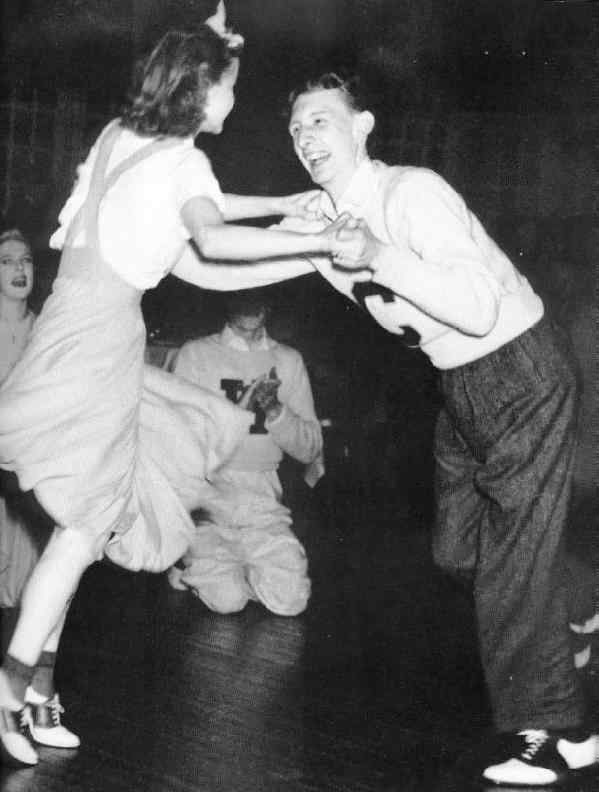
Figure 1.--The jitterbug was adopted by American teen agers in the late 1930s. It was danced to Swing music--actually Jazz by a different name. These New York teenagers were photographed "struting their stuff" in 1937. Notice the saddle shoes. |

|
Often pre-teen boys are not to interested in dancing, although many pre-teen girls are. By the teen years, boys increasingly become interested in dancing as well. Often teen agers dances with a great deal of movement requiring considerable enegy. Often these were dance crazes are fads which only lasted a few years. Many decades are defined by popular dances, such as the Chrleston and Lindsey Hop (1920s), jitter bug and swing (late30s-early 40s), rock and roll (1950s), and the twist (1960s). Normally their parrents stayed away from these dances which were primarily embraced by teenagers who had the energy to execute them. Swing era music and dance was especially interesting in that the music was essentially music evolving out of the Black community. It was generally frounded upon by White parents. Once the name was changed to swing and White bands like Benny Goodman began performing, it was quicly embraced by White teenagers, many of whom might not have accepted it if they had been aware of its essentially Black origins. In the 20th century many of the popular teen dances have been American in origin. As a result, they have not always been well received by authorities in other countries, especially in totalitarian countries.
Often pre-teen boys are not to interested in dancing, although many pre-teen girls are. By the teen years, boys increasingly become interested in dancing as well.
In the 20th century many of the popular teen dances have been American in origin. We are not entirely sure why this was. America's large Black minority with an expeimental approach to music and an African influence could be one factor. Another factor is the emergence of the entertainment industry, first Hollywood (1920s), television (1950s), music videos (1970s) helped to carry America fads and fashions around the world. Also teen agers in America were generally freer to express themselves, even in ways their parents might disapprove, than in more tradition-bound Europe.
The American origins of these dances have not always been well received by authorities in other countries. These dances were viewed as symbolic of youthful rebellion whivh raised parental eyebrows and perhaps those of fundamentalist preachers. In Europe they caught the attention of the NAZI Gestrapo and Soviet KGB. The American origins and sence of rebellion were not to be tolerated in totalitarian countries where the government is actively involved in molding young minds. The Gestapo in NAZI Germany was ordered to stamp out jazz and swing music. Jass was especially hated by the NAZIs because of its Black origins and the fact that some Jewish musiscians played it. The movie "Swing Kids" deals with this subject. I believe that Soviet authorities actively discouraged American teen age dance and music, but I have less information here.
Navigate the Historic Boys' Clothing Web Site:
[Introduction]
[Activities]
[Biographies]
[Chronologies]
[Countries]
[Style Index]
[Bibliographies]
[Contributions]
[Frequently Asked Questions]
[Glossaries]
[Satellite sites]
[Boys' Clothing Home]
Navigate the Historic Boys' Clothing Web dance pages:
[Main dance page]
[Irish step]
[Kilts]
[Highland]
[Ballroom]
[Native American]
[Tap]
